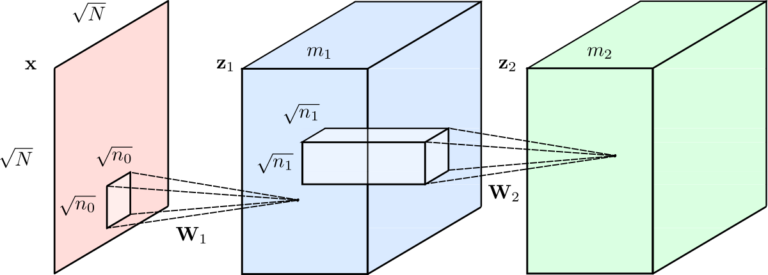In today’s digital age, majorly 3 types of neural networks play a pivotal role in various applications, from image recognition to natural language processing. These powerful algorithms mimic the human brain’s structure and functionality, enabling machines to learn and make decisions.
In this article, we’ll explore the fascinating world of neural networks, diving into three prominent types: Feedforward Neural Networks (FNN), Convolutional Neural Networks (CNN), and Recurrent Neural Networks (RNN). So, buckle up as we take you on a journey through the neural landscape.
Table of Contents
Introduction to Neural Networks
Neural networks are a subset of machine learning algorithms inspired by the human brain. These networks consist of interconnected nodes, or “neurons,” organized into layers. They can process vast amounts of data, recognize patterns, and make decisions, making them invaluable in various domains.
Types of Neural Networks
There are 3 major types of Neural Networks we will talk about in this article. They are:
- Feedforward Neural Networks (FNN)
- Convolutional Neural Networks (CNN)
- Recurrent Neural Networks (RNN)
Feedforward Neural Networks (FNN)
Understanding FNN Architecture
Feedforward Neural Networks, also known as multilayer perceptrons, are the simplest form of neural networks. They are made up of a hidden layer, an output layer, and an input layer. Information moves from input to output in a single direction without any feedback loops.
FNNs are ideal for tasks like regression and binary classification, where data input doesn’t depend on previous inputs.
Applications of FNN
FNNs find applications in diverse fields, including finance (stock market prediction), healthcare (disease diagnosis), and marketing (customer churn prediction).
Convolutional Neural Networks (CNN)
Anatomy of CNN
Convolutional Neural Networks are tailored for tasks involving images and visual data. Their architecture includes convolutional layers, pooling layers, and fully connected layers. CNNs excel at detecting spatial patterns in images.
Real-world CNN Applications
CNNs are the backbone of image recognition systems, autonomous vehicles, and medical image analysis. Their ability to capture intricate details in images makes them indispensable.

Recurrent Neural Networks (RNN)
Unraveling RNN Structure
Recurrent Neural Networks are designed to handle sequences of data. They introduce loops within the network, allowing information to persist across time steps. This architecture makes RNNs suitable for tasks like speech recognition and language translation.
RNN in Natural Language Processing
In NLP, RNNs shine in tasks such as sentiment analysis, machine translation, and speech synthesis. Their ability to understand the context of words within a sentence is a game-changer.

Comparing the Three Types
When choosing between 3 types of Neural Networks FNNs, CNNs, and RNNs, understanding their strengths and weaknesses is crucial. FNNs are excellent for structured data, while CNNs excel in image-related tasks. RNNs shine in sequential data processing.
Knowing when to use each type depends on your specific application and data type.
Future Trends in Neural Networks
The world of neural networks is ever-evolving. Researchers are exploring hybrid models that combine the strengths of different types of networks. The future promises even more advanced and efficient algorithms.
Conclusion
In this article, we’ve explored three fundamental types of neural networks: Feedforward Neural Networks, Convolutional Neural Networks, and Recurrent Neural Networks. Each type has its unique characteristics and applications.
As technology advances, we can expect further innovations in the field of neural networks, opening up new possibilities in AI and machine learning.
Frequently Asked Questions (FAQs)
Q1: Are neural networks the same as deep learning? No, neural networks are a broader concept that includes deep learning. Deep learning refers specifically to neural networks with multiple hidden layers.
Q2: What are some popular deep learning frameworks for building neural networks? Common deep learning frameworks include TensorFlow, PyTorch, and Keras.
Q3: Can neural networks be used for audio data processing? Yes, recurrent neural networks (RNNs) are commonly used for tasks like speech recognition and music generation.
Q4: Are there any limitations to neural networks? Neural networks require large amounts of data for training and can be computationally intensive. They may also suffer from overfitting if not properly regularized.

